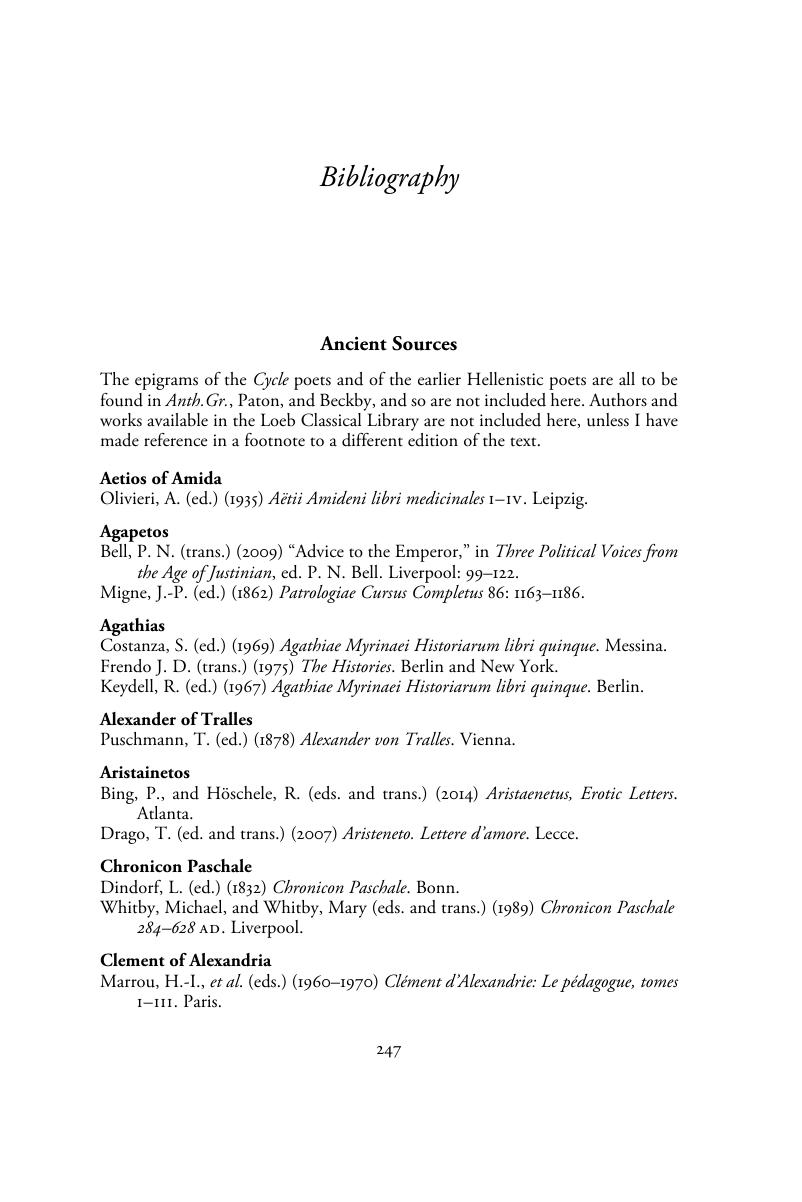Book contents
- Greek Epigram and Byzantine Culture
- Greek Culture in the Roman World
- Greek Epigram and Byzantine Culture
- Copyright page
- Dedication
- Contents
- Figures
- Acknowledgments
- A Note on Names and Abbreviations
- Introduction
- Chapter 1 Food and Wine
- Chapter 2 An Erotic Geography
- Chapter 3 Urban Pleasures
- Chapter 4 Phallic Creatures
- Chapter 5 Classical Women
- Chapter 6 Thieving Aphrodite
- Conclusion
- Bibliography
- Index
- References
Bibliography
Published online by Cambridge University Press: 10 May 2019
- Greek Epigram and Byzantine Culture
- Greek Culture in the Roman World
- Greek Epigram and Byzantine Culture
- Copyright page
- Dedication
- Contents
- Figures
- Acknowledgments
- A Note on Names and Abbreviations
- Introduction
- Chapter 1 Food and Wine
- Chapter 2 An Erotic Geography
- Chapter 3 Urban Pleasures
- Chapter 4 Phallic Creatures
- Chapter 5 Classical Women
- Chapter 6 Thieving Aphrodite
- Conclusion
- Bibliography
- Index
- References
Summary

- Type
- Chapter
- Information
- Greek Epigram and Byzantine CultureGender, Desire, and Denial in the Age of Justinian, pp. 247 - 272Publisher: Cambridge University PressPrint publication year: 2019



